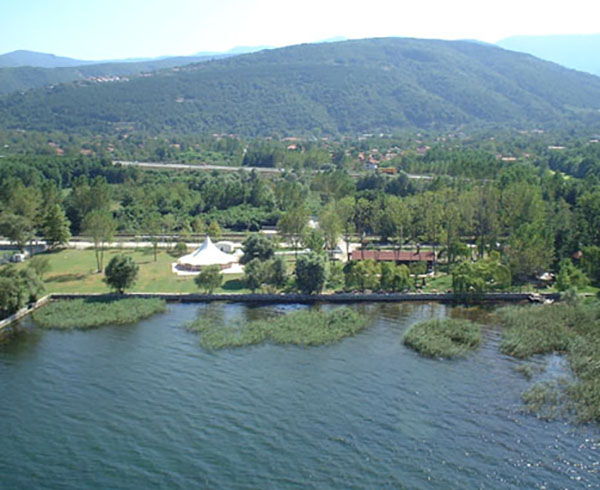TURKEY, ASIA
Lake Sapanca
Lake Sapanca lies on a tectonic fault running between Izmit Bay and Adapazari Meadow, parallel to Lake Iznik in northern Turkey. With a catchment area of 251 km², the lake stretches over 16 km from east to west, and 5 km from north to south. The lakes surface is 45 km², with a maximum depth of 52 m. Lake Sapanca is surrounded by mountains in the south and small hills in the north, and one of the few freshwater bodies in the region.
What makes it special
The region around Sapanca has become very important for day trips and weekend vacations with its charming natural beauty. Lake Sapanca is one of the few lakes in Turkey that has water of drinking quality.

Biodiversity
Lake Sapanca in hosts a diverse array of fish species. Among them are the European Eel, Big-scale Sand Smelt, and Black Sea Shad. The lake is also home to the Angora Loach (Cobitis vardarensis) and various members of the Cyprinidae, including Common Bream, Italian Bleak, and Common Bleak. Northern pike, goby species like Caucasian Dwarf Goby, Racer Goby, Round Goby, Monkey Goby, Syrman Goby, and Marine Tubenose Goby add to the richness. Additionally, the lake supports Pumpkinseed, European Perch, European River Lamprey, and Salmonidae such as Rainbow Trout, Black Sea Salmon, and Salmo Cettii. The Siluridae family is represented by the Wels Catfish, while Syngnathidae species include Black-striped Pipefish and Narrow-snouted Pipefish. This biodiversity extends to birds, mammals, amphibians, reptiles, insects, and various plant species in the lake’s vicinity.

Local Communities
Lake Sapanca is Surrounded by the metropolitan municipalities Kocaeli, with a population over 1,7 million, and Sakarya, with almost 1 million people.
Threats
The lake it is exposed to heavy urbanization because of its natural beauty and its proximity to the metropolitan Istanbul. Natural forestlands in catchment areas have been vanishing quickly. There is pollution from highways near the coast and from wastewater from settlement areas around the lake, causing eutrophication in the lake.


